An aqueduct, forum, baths, noble homes with garden fountains and intricate mosaics? It must be the Roman ruins in Conímbriga, Portugal. Join us for a walk back in time on the western edge of the Iberian Peninsula.
Disclosure: This post contains affiliate links. If you buy something from one of our affiliates, we receive a small commission at no extra charge to you. Thanks for helping to keep our blog up and running!
Table of Contents
Roman ruins in Portugal?
Portugal’s history – like many countries in Europe – is long and tumultuous. In the 3rd century BCE – more than 2700 years ago – the Roman legions began conquering native tribes in the Iberian Peninsula. By the end of the 1st century BCE, Roman rule was firmly established, marking the beginning of a new era.
Roman roads began to cross the landscape. Arched bridges spanned rivers. Aqueducts brought water as villages grew to towns. The province of Lusitania was created. Eventually towns grew to cities with forums, theaters, and temples. Cities – like Olisipo (today’s Lisbon) and Bracara Augusta (now Braga) – were established.
For today’s travelers, like us, this past comes to life in serendipitous, last-minute change of plans.
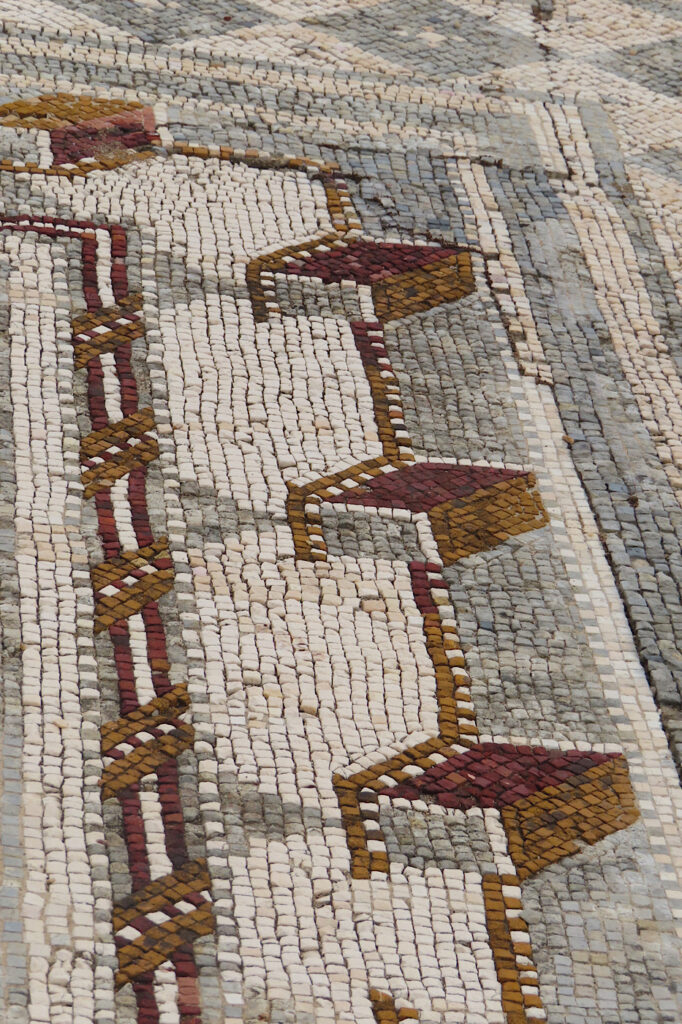
We’d already explored the Roman Temple of Diana in Évora. We wandered through the remains of a Roman villa in Prazo. Roman bridges were investigated on our way north to hiking in Parque Nacional Peneda-Gerês.
Flipping through our Portugal guidebook on our way down from Porto we skipped right past Coimbra. We weren’t in a city mood as we headed south for more hiking in Serras de Aire e Candeeiros. And then we saw a “worth the trip” sidebar.
Conímbriga… Portugal’s largest and most impressive Roman site.
We’re in!
Exploring Conímbriga
Conímbriga was inhabited long before the Romans. Fragments of pottery discovered in the city date back to the Late Bronze Age – around 1000 BCE. Back then it was home to the Conii tribe. They were one of the pre-Roman peoples inhabiting the Iberian Peninsula in the late Iron Age. However, it was under Roman rule, from the 1st century BCE, that Conímbriga really became established.
Conímbriga is located along the main road that connected Olisipo to Bracara Augusta in the past. It became an important economic center as we’d discover in the museum at the site entrance.
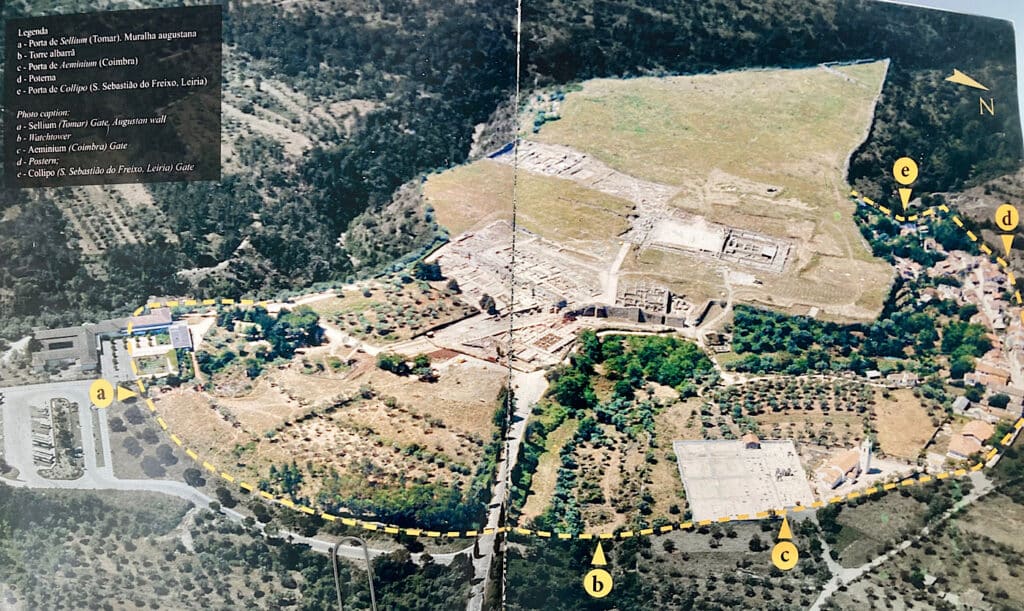
The museum is perfect for getting an introduction to the site. Not only does it provide an overview of the city’s history, it also allows visitors to see some of the artifacts found. These include everything from personal items to carved stones.
Touring the ruins
We headed on the path from the museum in a clockwise direction. What we saw had us standing still in amazement. In particular, our gaze arrested on the exposed mosaic floors and rooms of Casa dos Esqueletos (House of Skeletons) and Casa da Cruz Suástica (House of the Swastika). These were named for the patterns in the mosaic floors.
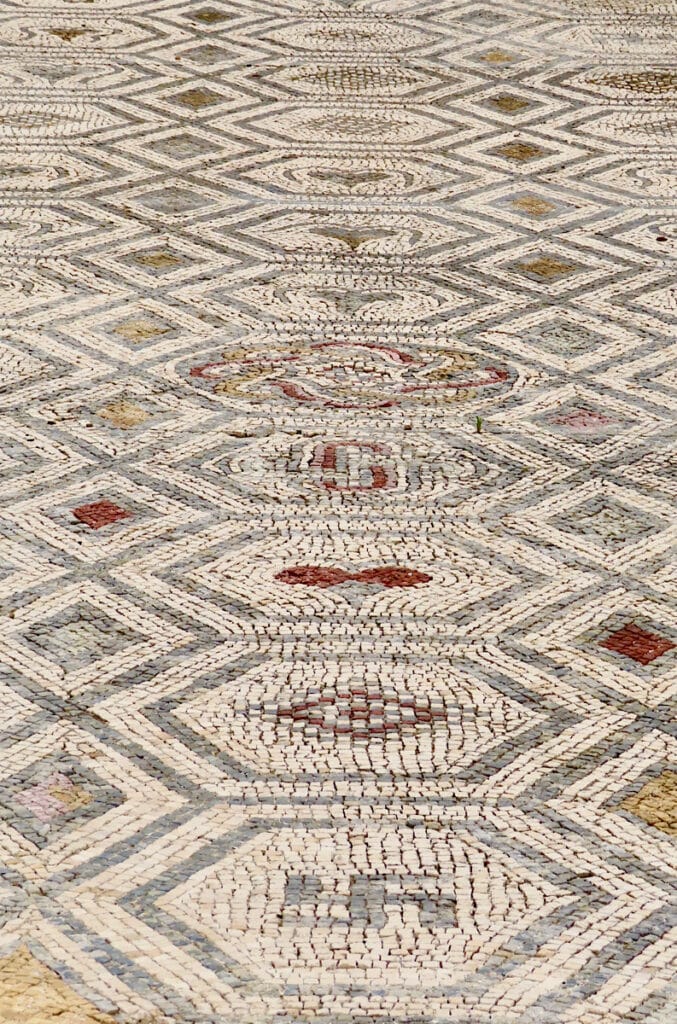
Keeping left, we crossed through a break in the wall. Here lies more rooms, gardens with remains of fountains, and the small baths of Casa de Cantaber. It was the largest villa in the city.
From here we headed across a large, unexcavated area. It’s important to realize that about 20% of the city has been excavated by archaeologists. We wandered through the large public bath. Beneath the lower patio are the remains of Iron Age habitation.
It helps to have a visual in mind from the replica/model in the museum when you move on to investigate the forum. The same could be said for the aqueduct and city wall construction. The wall was built at the end of the 3rd century CE as threats to overturn Roman power began to rise.
Saving the best for last
Saving the best for last, we ended our visit at the reconstructed fountain gardens of Casa das Fontes.
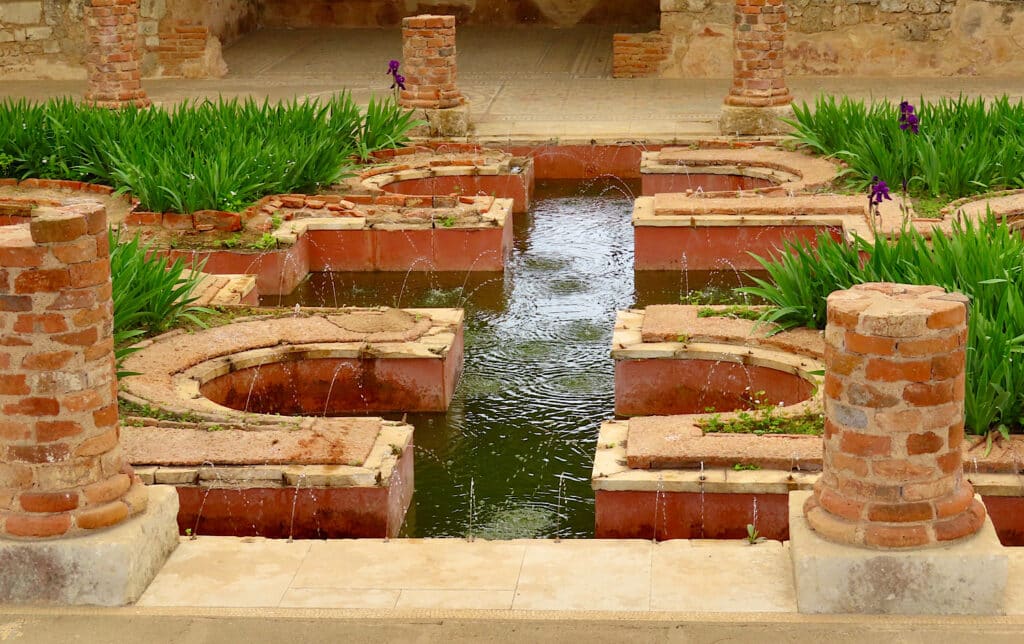
In the end it felt as though we could see into the past. An employee dressed in Roman regalia strolled by with a group of people… cell phone in hand taking photos as she continued on her way.
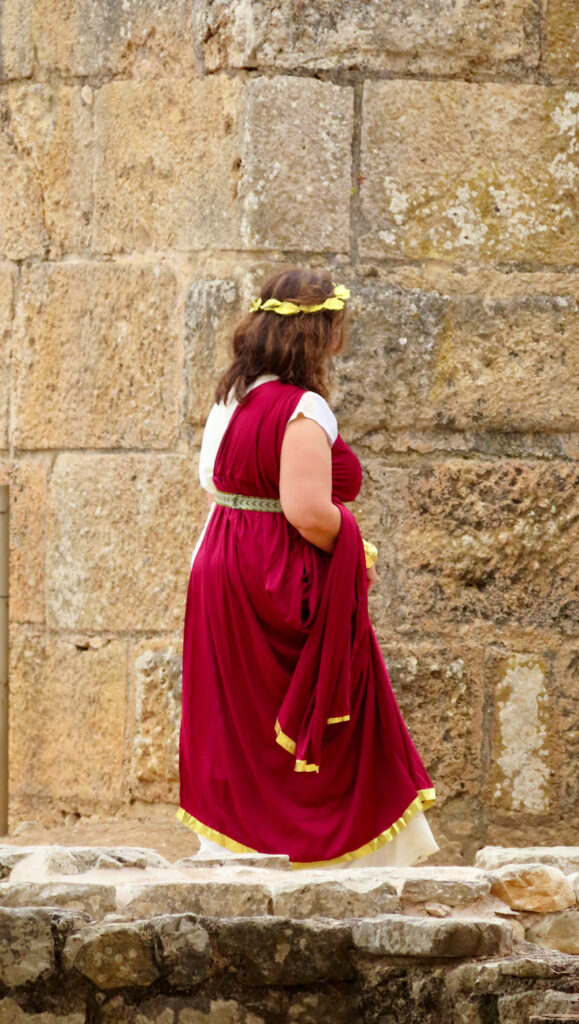
Arab invasion and end of the Roman Era
By the 4th century CE, Roman power in Portugal had declined. At the beginning of the 8th century CE – about 1600 years ago – the Moors had invaded and occupied almost all of the Iberian Peninsula. As a result, Conímbriga was abandoned and long forgotten.
These Roman ruins were “rediscovered” in the 16th century CE. In 1873 the Institute of Coimbra started studying the site. In order to provide a clearer picture, the first major surveys of Conímbriga were done in 1899. As a result, the site was declared a National Monument in 1910. Accordingly, major archaeological excavations began in 1929. In the 1940s and 50s, portions of the site were stabilized and rebuilt – including the mosaics.
Is Conímbriga, Portugal worth visiting?
If you’re planning a trip to Portugal and love history, the answer is a resounding yes. Don’t miss this chance to explore the past and a glimpse of another life in these Roman ruins.
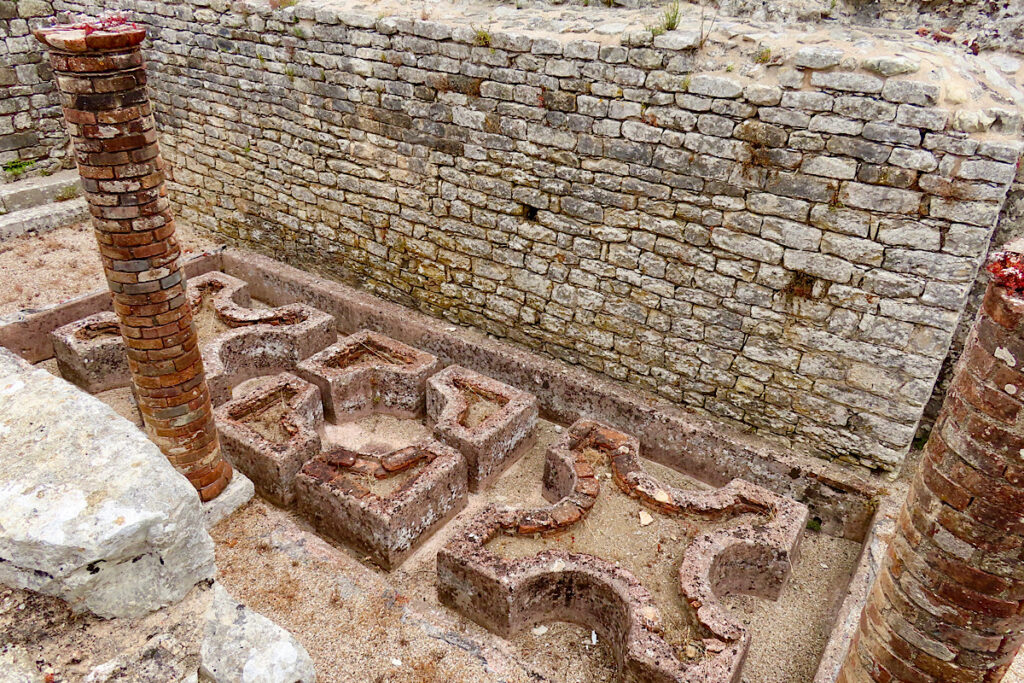
How do you get to Conímbriga Portugal
Conimbriga, located in the center of Portugal, close to Condeixa-a-Velha. It is about 15 kilometres (9.3 mi) southwest of Coimbra.

Leave a Reply